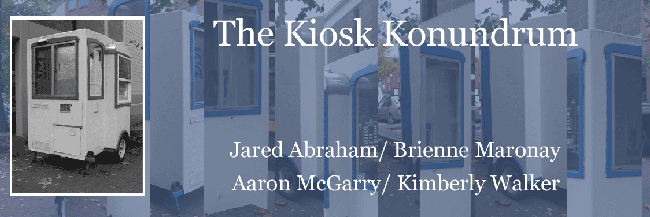
In this Vital Case Study for our Environmental Control Systems course, our group conducted an experiment of thermal comfort within your average street-side food kiosk. We chose Alexander’s Great Falafel on the corner of Thirteenth Street and Kincaid Boulevard as the subject of our inquiry. The effectiveness of the kiosk’s building envelope as a measure of structural insulation made up the bulk of our investigation. We explored whether the kiosk was able to retain any of its heat generated throughout the day, after all of the heat radiating equipment had been turned off and business hours were terminated. We hypothesized that during the course of the night the internal temperature of the falafel kiosk would reach equilibrium with the outdoor temperature. Throughout a period of time spanning the twentieth to the twenty forth of November, we recorded dry bulb temperatures and humidity data from the kiosk. We placed two temperature dataloggers in high and low locations within the kiosk to record the data. We also placed one temperature datalogger outside, on top of the structure, to record the outdoor temperatures over the same time period. We interviewed Alexander, the owner of the business, regarding his personal experience with thermal comfort and the kiosk. Finally we examined all of our research and findings to discover that our hypothesis had been proven incorrect. In fact, almost all of the questions that we asked ourselves were refuted, as our obtained information proved quite contradictory to our predictions. The falafel kiosk never actually reached equilibrium with the outdoor temperatures.
